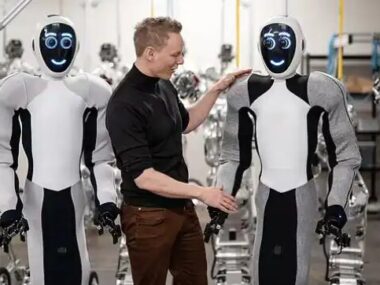Quadrupedal robots are becoming a familiar sight, but engineers are still working out the full capabilities of these machines. Now, a group of researchers from MIT says one way to improve their functionality might be to use AI to help teach the bots how to walk and run.
Usually, when engineers create the software that controls the movement of legged robots, they write rules about how the machine should respond to specific inputs. So, if a robot’s sensors detect x amount of force on leg y, it will power up the motor a to exert torque b, and so on. Coding these parameters is complicated and time-consuming, but it gives researchers precise and predictable control over the robots.
An alternative approach is to use machine learning — specifically, a method known as reinforcement learning that functions through trial and error. This works by giving your AI model a goal known as a “reward function” (e.g., move as fast as you can) and then letting it loose to work out how to achieve that outcome from scratch. This takes a long time, but it helps if you allow the AI experiment in a virtual environment where you can speed up time. It’s why reinforcement learning, or RL, is a popular way to develop AI that plays video games.
This is the technique that MIT’s engineers used to create new software (known as a “controller”) for the university’s research quadruped, Mini Cheetah. Using reinforcement learning, they achieved a new top speed for the robot of 3.9m/s, roughly 8.7mph.
Using a simulator, engineers can place the robot in any virtual environment — from solid pavement to slippery rubble — and let it work things out. Indeed, the MIT group says its simulator could speed through 100 days’ worth of staggering, walking, and running in just three hours of real-time.
Some companies that develop legged robots already use these methods to design new controllers. Others, like Boston Dynamics, apparently rely on more traditional approaches. (Given the company’s interest in developing specific movements like the jumps, vaults, and flips seen in its choreographed videos, this makes sense.)
There are also faster-legged robots out there. Boston Dynamics’ Cheetah bot currently holds the record for a quadruped, reaching speeds 28.3 mph — faster than Usain Bolt. However, not only is Cheetah a much bigger and more powerful machine than MIT’s Mini Cheetah, but it has achieved its record running on a treadmill and mounted to a lever for stability. Without these advantages, AI might give the machine a run for its money.
source: The verge






